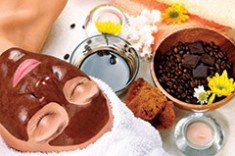Going to a dermatologist’s office and getting prescription drugs is the logical, first choice for many acne sufferers. Patients are usually given antibiotics, and/or a choice of prescription retinoids to try. Most often, when this approach fails, the dermatologist will prescribe a new antibiotic and then often another. When those treatments fail, physicians will often recommend a cycle of Accutane (or it’s generic equivalents). Unfortunately, prescription drugs usually fail or only temporarily clear the acne and there are many side effects which can be very dangerous.
Antibiotics
Antibiotics never kill 100% of the bacteria and the ones that survive breed a colony which is resistant to that antibiotic. That is why we are now seeing strains of bacteria that are virtually indestructible. The PBS award winning television program, Frontline, recently (Oct. 22, 2013) ran an episode called “Hunting the Nightmare Bacteria.” This episode should be seen by everyone because it exposes the harsh reality that people are dying from infections that even the finest medical teams and technology cannot combat. The threat is growing and experts are very afraid. Frontline will soon be airing a follow up to this episode which will expose that constant inappropriate use of antibiotics is much of the reason for the creation of these strains of bacteria. Treating of acne is one of those inappropriate uses. This is the societal danger of unnecessary use of antibiotics; but what about the danger to you, personally?
- According to a study in the September 2005 Archives of Dermatology, people who use antibiotics are more than twice as likely to catch colds.
- According to a study published by the Journal of the American Medical Association[i], heavy use of antibiotics may increase a woman’s risk of developing breast cancer. The study looked at 10,000 women over eight years and found that those who took the highest amounts of antibiotics the longest faced twice the risk of developing breast cancer than those who didn’t.
- Part of the FDA warning for clindamycin states: “…. clindamycin has been associated with severe colitis which may result in patient death. Use of the topical formulation of clindamycin results in absorption of the antibiotic from the skin surface. Diarrhea, bloody diarrhea, and colitis (including pseudomembranous colitis) have been reported with the use of topical and systemic clindamycin. Studies indicate a toxin(s) produced by clostridia is one primary cause of antibiotic-associated colitis.”
Retin-A
While there are no reported “dangerous” side effects of topical retinoids, there are problems with using it for acne. The cream form of Retin-A includes isopropyl myristate, a highly comedogenic ingredient which makes acne much worse. Even if the patient is prescribed an appropriate retinoid, the retinoid often makes their skin so sensitive and irritated that they abandon using it before it becomes effective.
Isotretinoin
The FDA posted an alert in 2005 that said all patients taking Accutane should be closely watched for serious psychological symptoms including:
- depression
- suicidal tendencies
- short tempers
- loss of social interaction
- psychosis
In 2009, Roche decided to pull Accutane off the US market after juries had awarded many millions of dollars in damages to former Accutane users over inflammatory bowel disease claims. It can cause other severe physical side effects, including:
- Crohn’s disease
- central nervous system injuries
- skeletal damage
- liver damage
- cardiovascular injuries
- muscle loss
- ulcerative colitis
- pancreatitis
- immune system disorder
- birth defects
Although Accutane has been taken off the market, other brands of the drug, isotretinoin, continue to be prescribed for acne, despite the serious long term health risks
The alternative to drugs
Having successfully cleared the skin of thousands of acne clients since 1990, I can confidently state that no prescription drugs are needed to clear up people’s skin. As Dr. James E. Fulton*, renowned acne expert, pointed out, though acne bacteria is present, it is a symptom of the true cause of acne, which is retention hyperkeratosis. That is an inherited tendency of the pores to shed dead skin cells more quickly than normal pores (up to five times more quickly). So, when you have your clients use products that keep the pore free from excessive cell buildup, they will clear up.
Exfoliating serums like mandelic, glycolic and/or salicylic serums (depending on the type of acne) used in combination with benzoyl peroxide get the job done. Recommending the correct products is vital, but just as important is how the products are used. Clients need to start slowly with of the strongest products their skin can tolerate and slowly increase the frequency of product use. Under this system, it takes about three months for most people to get completely clear. The only potential side effect of this modality is some temporary dryness of the skin, which is better than the serious health problems which they may encounter with prescription drugs.


